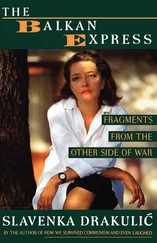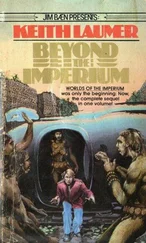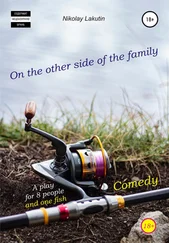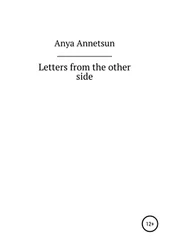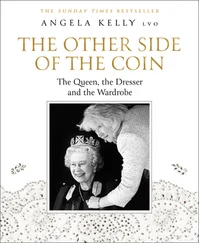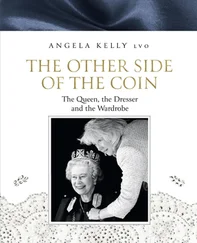I did not come to Israel the easy way, though as a middle-class Londoner I could have strolled into any flat in Tel Aviv. I chose instead a path that I believed followed in the footsteps of the pioneering Jewish immigrants to Palestine. I arranged with the Jewish Agency in London to spend my first six months in an immigrant absorption centre in Rana’ana, close to Tel Aviv. I knew what I was letting myself in for: an apartment shared with strangers newly arrived from all over the world, separated by different languages, cultures and traditions. All we would have in common was the knowledge that we were Jews and that we wanted to become Israelis.
These first months were something of a culture shock that tested the resources of many of the inmates. I arrived with my British culture, but the absorption centre was also home to people from many other cultures, including Americans, Dutch, Russians, Swiss, French and South Americans. All of us had to adjust both to these other cultures and to the new Israeli culture. We also struggled with the abruptness of Israelis, which many took for rudeness. The Rana’ana centre has perhaps the most privileged intake of Jewish immigrants anywhere in Israel, with most coming from developed countries. It beats by a considerable margin the caravan transit camps reserved for Ethiopian Jews, the Jewish group most discriminated against inside Israel. Many of the one million Russian Jews who arrived in Israel during the 1990s following the collapse of the Soviet Union also stayed in far less salubrious surroundings.
Nonetheless, the absorption centre was a tough and uncomfortable introduction to Israel, which I remember left several people close to a nervous breakdown and ready to fly back home. I still have a cutting from a local newspaper, Ha Sharon , headlined ‘Immigrants Complain of Poor Conditions’. A letter written by some of the French and American inmates to the absorption centre’s management is quoted: ‘The apartments are old and full of mould and fungus. The kitchens are broken, the showers don’t work properly, the walls are peeling and we have no air-conditioners.’ And it is true that in many ways Rana’ana was as much a prison as a melting pot. Having spent my childhood from the age of seven onwards, however, in the harsh, disciplinarian atmosphere of British boarding schools, coping with these material hardships only slightly marred the wonderful experience of being absorbed into a new country and culture, and meeting so many like-minded Jews.
But in these early months I started to experience darker moments. A big disappointment was that the only family I had in Israel, religious cousins living in the southern city of Ashdod, who originally approved of my decision to make aliya, kept their distance from the moment I arrived. They did not even meet me at the airport. For a while their attitude baffied me, but eventually I came to understand how my migration challenged their sense of their own Israeliness. They belong to the right-wing religious camp, and still hold onto a vision of Israelis as pioneering frontiersmen, settlers implanting themselves in hostile terrain. I think they were convinced that, with my ‘European softness’, I would not be able to stay the course. And when I confounded them by securing almost immediately a well-paid position in Tel Aviv teaching English to business professionals, my easy assimilation served only to antagonise them yet further.
My job involved travelling from one office to the next, which meant that I quickly learned my way around Tel Aviv. I also met and got to know a range of Israelis with different political views and insights into the ‘Israeli experience’. I heard from some of them about their own problems as immigrants being absorbed into Israeli society, about their concerns at their children serving in the army, and about the country’s economy.
Four months after my arrival I suffered a devastating blow when I was diagnosed with a rare form of eye cancer. I had to begin a crash-course in negotiating my way single-handedly around Israel’s health care system, and eventually found myself in Jerusa-lem’s Hadassah hospital, awaiting an operation on my eye. Hadassah occupies a striking position, set in a pine forest overlooking the old stone houses of Ein Kerem, a Palestinian village that was cleansed of its population in the 1948 war and is now a wealthy suburb of Jerusalem to which many rich Jews aspire to move. It has state-of-the-art medical equipment and is staffed by a mix of Israeli Jews and Arabs, and it was there that I got my first inkling that the country I had so longed to be a citizen of might not be quite what I imagined. I was lying in a ward surrounded by beds filled not just with other Jews but with many of the diverse, and confusing, ethnic and religious components of the Holy Land: Jews, Christians, Muslims and Druze. This was before the intifada of September 2000, but still it was surprising to see Israelis and Palestinians sharing the same ward. Even more confusingly, many of the Palestinians were Israeli citizens, members of a group I discovered were commonly referred to as the ‘Israeli Arabs’. The Jewish state was clearly a lot less ethnically pure than I had been led to believe.
It was another experience on the ward that started me questioning what was really going on inside Israel. One day a young Orthodox woman arrived on the ward clutching her month-old baby, who had just undergone surgery on an eye. That evening her husband came to visit. He was wearing a knitted kippa, long sidelocks, and had a pistol on one hip and a rifie slung casually over his shoulder. This is the uniform of the nationalist religious right in Israel—better known abroad as ‘the settlers’. The thought that a heavily armed civilian could wander freely around a hospital where women and children were ill appalled me. I engaged him in conversation as he was leaving. In a strong American accent he told me: ‘I’ve just requisitioned an Arab home in East Jerusalem. I never leave home without a weapon.’ I suggested to him that he would be better off living in the Jewish quarter in the Old City. No, he retorted. ‘All of East Jerusalem belongs to the Jews.’
His words left a nasty taste in my mouth. Why was he stealing homes from Arabs in the Palestinian part of the city, the section captured by Israel in the 1967 war, when there were vast tracts of the country he could choose to live in? And why did I appear to be the only person on the ward who thought it strange for a visitor to arrive in a hospital wearing a gun?
I left the hospital confused by the signals Israel was sending me. Here was a state that prided itself on having one of the best medical systems in the world. And access to health care seemed not to be affected overtly by grounds of race or creed. But it was also clear that some Israelis had an unhealthy admiration for violence and an appetite for what did not belong to them. Israel did not appear to place many controls on their behaviour.
My strong humanist values derive from an understanding of both my family’s history and my people’s. My father raised me on stories about my great-grandfather, Zussman Hershovitz, who lived in one of the Jewish ghetto communities, the shtetls, in Lithuania. I was taught as a small child the consequences of being Jewish for men like my great-grandfather, how it was not possible for him to go to school as a boy, how he ended up as a peddler moving from place to place to avoid the pogroms. In addition my father, Samuel Levy, a respected Harley Street doctor, instilled in me a deep appreciation of Jewish ethics, culture and history. I cannot claim he was a good father. Much of my childhood was spent living in terror of his rages and under the shadow of his disappointment. But outside the immediate family circle he was never less than a flercely loyal and dedicated healer. Although he was very successful, he believed he had wider social responsibilities than simply accumulating money from the wealthy clientele who visited his London practice. He continued to dedicate much of his time to a practice he started when he was younger in a deprived part of Essex. After he retired in 1973 he returned to the country of his birth, South Africa, during the apartheid years to be medical health officer and practise in a clinic for blacks only in Groote Schuur, Cape Town.
Читать дальше

